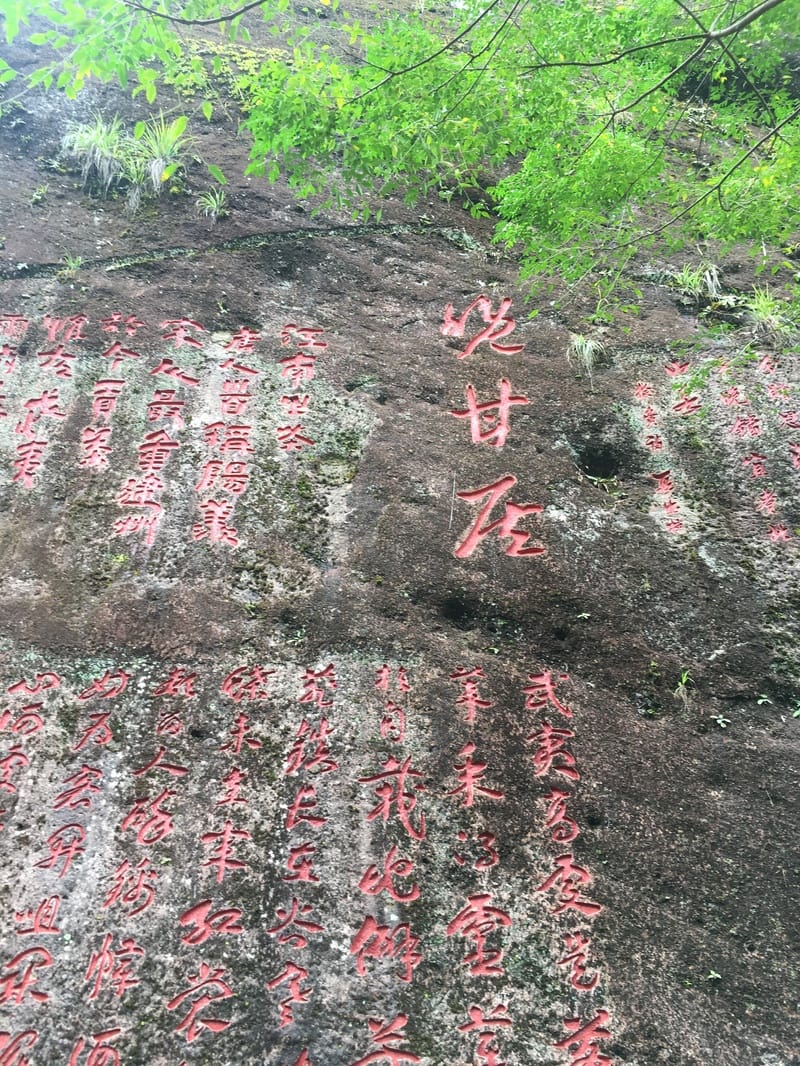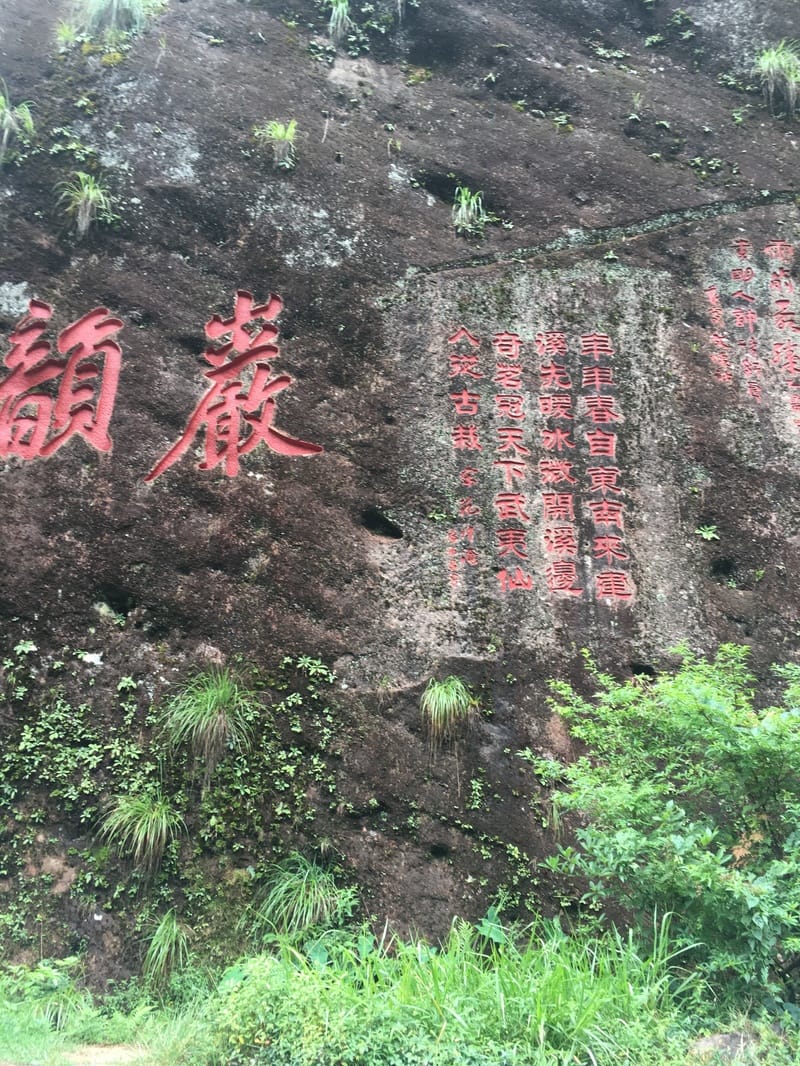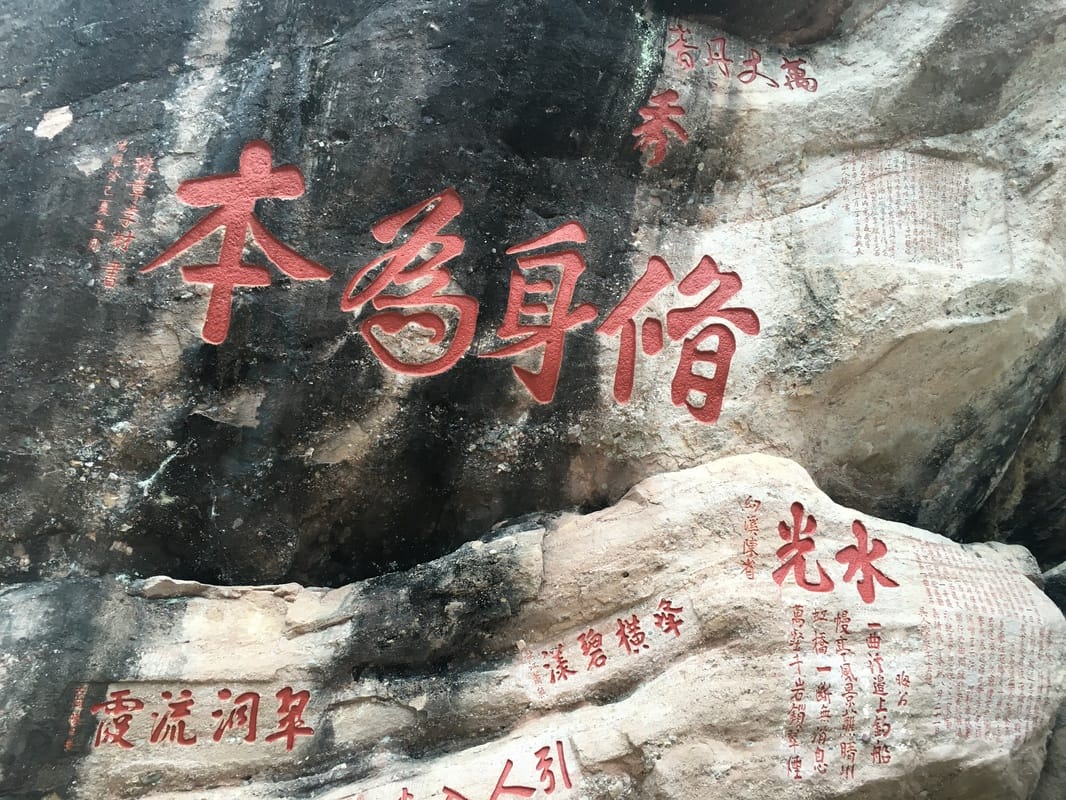|
While the word written on the rock might last forever, legends passed from generation to generation might be even more long living. Rock grown tea or yancha brings a lot of tales and legends. Having a history is as important as having a character. This is what defines the tea to the fullest, rounding it up in a delicate and expressive way to present the outstanding culture of Chinese tea production. Turtles, roosters, sparrowhawks, eagles, emperors, Buddhas and monks, they all have a connection to some of the most expensive and desirable rock tea produced these days.
In praise of animals Once upon a time, there used to be a Turtle deity that watched tea farmers happily working among tea leaves. He felt not important enough, being only a deity whose wishes were not listened to. One day he decided to turn into a tea. He reasoned that he would be far more appreciated and decided to give up his immortality and live through tea year by year. On the same Wuyi mountain, there used to live a monk whose name is not known. One day, his baby was being attacked by an eagle at the Hui Yan Rock. We would not be having a pleasure of drinking Bai Ji Guan tea if there wasn't for a brave rooster who sacrificed his life to save the monk's baby. Rooster died instantly, but on the very same spot, tea sprouted. The Ban Tian Yao owes its name to a bird as well. As the little sparrowhawk was being chased by an eagle, he saw there is no way to escape, so he landed and turned into a tea tree. As he did this on a cliff that looked liked hanging from a sky, name of the tea was born- sparrowhawk halfway in the sky. Character for sparrowhawk was soon replaced with the one of same tone and pronunciation, but different meaning - waist - still describing the look of that cliff. Monks and Emperors Rock tea owes a lot of legends to Buddhas, monks and Emperors. Tie Luo Han was created by an arhat, warrior monk with great power. It is said that some of this tea was found in the cave where monks used to live. Many legends connect emperors and curing their diseases with tea. After all, tea was first used in medical purposes. Even the Shen Nong, Emperor who discovered tea 2700 years ago, found out about its incredible benefits by being able to see through his transparent skin. Big Red Robe oolong deserved its name after the Ming Dynasty Emperor's mother was cured by the Da Hong Pao tea, and red robes were sent to wrap the bushes to honour their importance. Even the new Jin Fo oolong, owes its name to the story of Buddha drinking tea. What else do legends tell us? While one tea might have dozens of legends connected to its name, and some maybe have none, they all have a great history. Even the new teas created in recent years, still share varietals that are very important and have a long history. Or maybe they were created by cross-breading two varietals. There would not be a greater joy than visiting legendary Da Hong Pao bushes still alive at Wuyi mountain and drink a cup of original rock tea. Nevertheless, the importance of tea is great, and stories will make our drinking experience even more enjoyable, while reminding us that the tea we are drinking was here long time before us. |
✵ CAMELLIA茗岩® Tea Bar Opening Private Party
✵ Health and Beauty of Wuyi Oolong ✵ Female Magazine Snippet (May Issue 2017) ✵ How to: 10-Minute Tea Meditation ✵ Wuyi Tea Ceremony ✵ UNESCO/NHK on Mt. Wuyi ✵ How is Wuyi Tea Made ✵ The legend of Scarlet Robe, Da Hong Pao ✵ Wunderlust List ✵ A True Treasure Archives
February 2023
Categories
All
|




 RSS Feed
RSS Feed